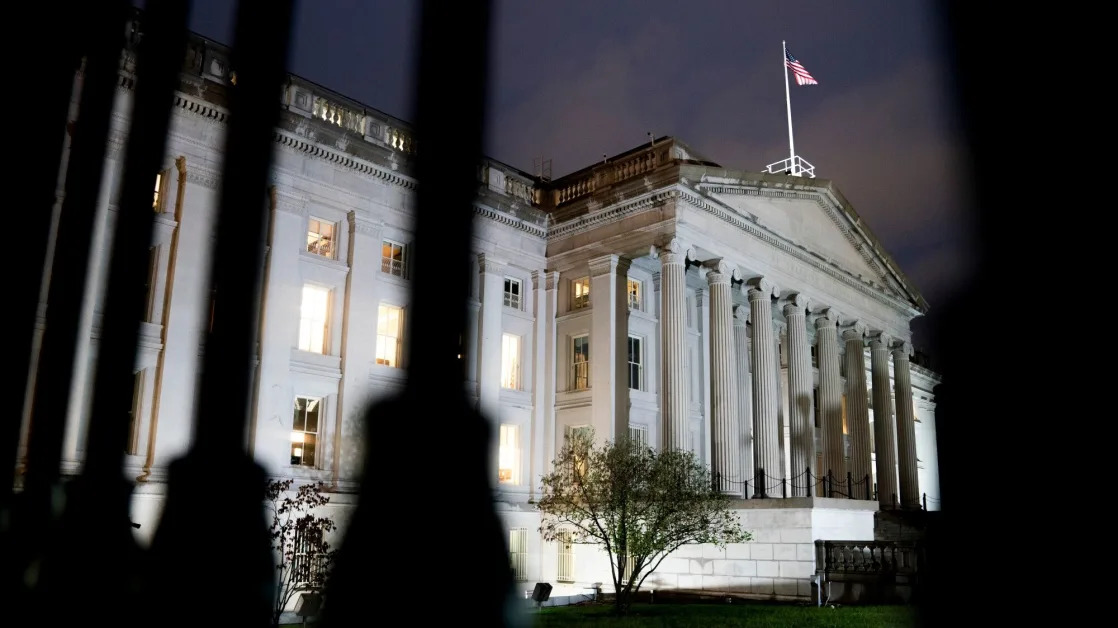(Bloomberg) -- The US Treasury market tumbled as traders took the Federal Reserve’s revised forecasts as reason to slash their expectations for interest-rate reductions next year.
The selloff lifted shorter-maturity yields, which are more sensitive to Fed policy shifts, more than 10 basis points to the highest levels in several weeks. The Fed cut interest rates Wednesday for a third-straight time as expected, while signaling that their pace next year is likely to be slower.
“This was a hawkish Fed cut,” said Priya Misra, portfolio manager at JP Morgan Asset Management. The Fed’s forecasts show officials now see two quarter-percentage-point cuts next year, while swaps traders are pricing in even fewer.
The Fed’s signal came on Wednesday via slightly more cautious language in the statement announcing the decision to lower the target band for the federal funds rate to 4.25%-4.5%. Fed Chair Jerome Powell in a news conference pointed to recent higher inflation readings as the main reason why.
The revised quarterly forecasts for the fed funds rate had medians of 3.875% for end-2025 and 3.375% for end-2026. Each was 50 basis points higher than the medians from September. Policymakers’ updated median estimate of the long-run neutral rate — a theoretical level that neither stimulates or restricts the economy — increased to 3% from 2.90%.
The so-called dot-plot and related economic projections suggest that “a nontrivial number of FOMC voters no longer see current policy as restrictive,” said Ed Al-Hussainy, a rates strategist at Columbia Threadneedle Investment.
Wednesday’s quarter-point rate cut set the policy rate a full percentage point lower than its recent peak. Powell described the policy rate as “a lot closer to neutral” following the latest move.
The new rate projections align more closely with investor expectations, which have shifted higher since mid-September based on economic growth and inflation data. Ahead of the announcement, swap contracts linked to the outcome of future Fed decisions were priced for today’s quarter-point cut and another half point of easing next year, with little chance of a move in January. Subsequently, the contracts priced priced in even less easing.
In the markets, two-year yields jumped 11 basis points to 4.35%, rising above the three-month T-bills for the first time since March 2023. Longer-maturity yields rose less. Still, the 10-year note’s headed for its biggest increase on a Fed meeting date since June 2013, when a signal that central bank asset purchases would soon slow sparked a rout.
The Fed’s policy rate is a key input for Treasury yields, and fading expectations for additional rate cuts since September have driven them back above the 4% threshold to the highest levels since at least July. The benchmark 10-year note’s yield at about 4.43% is about 80 basis points higher since mid-September, creating losses for investors who bought at the lowest yield levels.
The revised economic projections of Fed policymakers anticipate faster economic growth than in September, lower unemployment and higher inflation.
Bond investors also are mindful of the potential for tax policies advocated by President-elect Donald Trump — who takes office next month — to fuel both growth and inflation.
“We believe the Fed is done for the next year,” said Gregory Faranello, head of US rates trading and strategy for AmeriVet Securities. The Trump administration “will be taking shots and the Fed is the goalie.”
The inflation gauge the Fed is trying to bring back down to a long-term average of 2% increased to 2.3% in October. The November reading, to be released Friday, is expected to be 2.5%, with a increase to 2.9% for core prices.
“Higher bond yields are what you would expect after the election of Trump in November,” said Brij Khurana, portfolio manager at Wellington Management. “The Fed will go on hold next year if inflation stays at current levels.”
--With assistance from Ye Xie.
(Adds detail, updates yield levels.)


